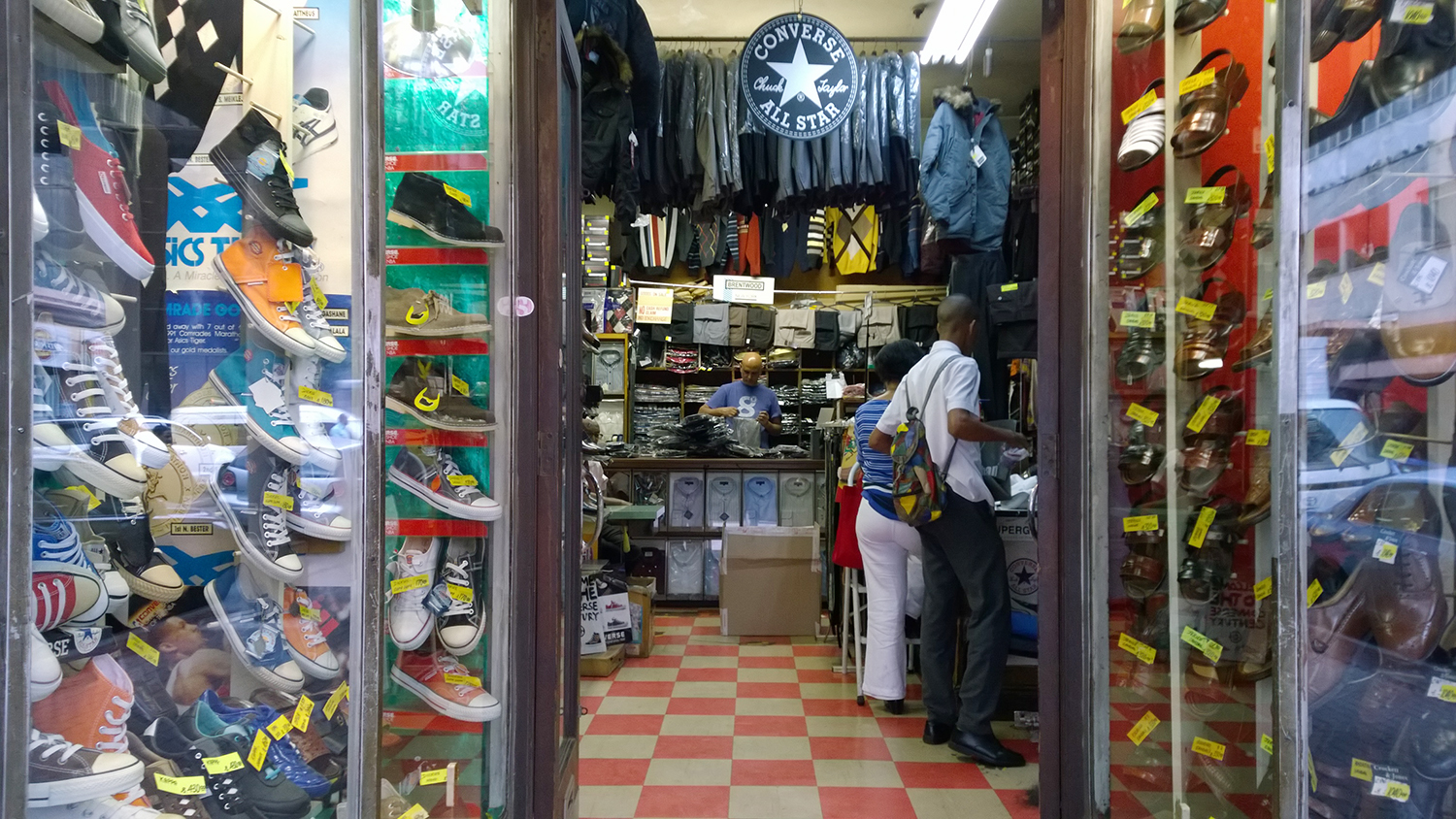In Johannesburg the “outfitters” is like the Spaza Shop. A culturally significant institution in which the dynamics of the cities sub-culture intersect, a space where history, politics and culture collide.
“Outfitters” is the general term, for mens boutiques, particularly those that were shaped by South Africa’s socio-political environment in the 20th century. The term outfitters derives from the “Tailoring and Outfitters licence”, which was at the time a legal requirement for anyone providing tailoring or clothing retail services. Like the city itself, the story of the outfitters in Johannesburg began on the mines. Indian immigrants, some of whom had been indentured labourers (others migrants) established tailoring businesses, which catered to Johannesburg’s growing black labour force. In those days, the early part of the 20th century, tailors either repaired clothing or produced made to measure pieces (usually trousers) for their clients.
It was only in the 1930’s that the current manifestation of the outfitters first emerged in Johannesburg. In 1931 Ismael Dajee opened City Warehouse, which was a “general dealer” at the time but would later become the mens outfitters known as City Hall. In 1936 Mr R Chiba opened R Chiba Tailoring and Outfitters on the corner of Diagonal and Market streets. The store was still predominantly a tailoring business, but Chiba also began developing the business into an outlet for ready to wear products. His store began selling Arrow shirts, C2C Khaki (Cape to Cairo khaki), 3X Denim and imported shoe brands: Jarman, Stacey Adam, Crocket & Jones, Johnston and Murphy, Freeman, Hardy & Willis.
Encouraged by the Johannesburg-black-labour-force’s ever growing fascination with, and thirst for fashion (American fashion in particular) the “tailors and outfitters” model spread across Johannesburg’s CBD. Most of the brands stocked in the outfitters were imported from the United States of America, a characteristic that would define both the outfitting business and Johannesburg’s sub-cultural aesthetic. John Hyslop, in his essay titled “Ghandi, Mandela and the African modern” mentions American stars, Duke Ellington and Glen Miller as characters on which Johannesburg based bands modelled themselves. He also states “the clothing and cars that Mandela and fashionable black youth aspired to were those in Hollywood movies”. Mr Abdullah Dajee, grandson of Ismael Dajee (founder of City Hall) also suggests that up until the early 1980’s black mens fashion in Johannesburg was mainly, if not exclusively influenced by black America. According to Dajee, the reason for this was South Africa’s political isolation, which meant that South Africa received limited media from the rest of the world and the media that did reach the country was mainly British and American. It was Black American culture though that captured black Johannesburg’s imagination, which is an indication that there were other reasons for the connection, one of those reasons being politics. Hyslop explains, “For the members of the BMSC(Bantu Mens Social Club), African America provided a fiercely attractive model of selfhood, combining modernity with defiance of racial power. Their exemplars were black Americans whose sporting or cultural achievements had incorporated implicit or explicit statements of political identity”.
Black Johannesburg’s historical relationship with Black America’s style and culture reveals the foundations of, and the dynamics underpinning Johannesburg’s-mens-fashion and sub-cultural story. A story that has always been characterised by a creolisation of the two cultures. Take the Swenka’s for example: Johannesburg’s first, documented sub-cultural formation, which is believed to have been around as early as the 1920’s. Swenka’s combined zulu traditional music and dance with Harlem’s renaissance fashions. Out of Sophiatown: black Johannesburg’s legendary cultural hub of the 1940’s and 50’s, emerged Mbaqana a sound which has been described as “marabi and kwela influences combined with big band swing” (American jazz). Pantsula – Johannesburg’s most notable sub-cultural formation was visually characterised by the adoption of American workwear and American sportswear as a form of political resistance.
It would take the fall of apartheid, a social, political and cultural shift so great, to jolt the outfitters from its historical position in Johannesburg’s sub cultural narrative. The influx of international brands, the establishment of new local brands/boutiques and the new streams through which black people flowed post-apartheid are some of the factors, which led to the outfitting businesses’ cultural decentralisation.
Outfitters are predominantly family run businesses, historically the mantle passed on from generation to generation. Mr C Chiba, grandson of Mr R Chiba (founder of R Chiba Tailoring and Outfitters) confessed that today’s generation have chosen to take alternative career paths leaving some outfitters in ageing hands and their future in a precarious position. Young people are generally the drivers of innovation and currently the lack of young people in the outfitting business is another reason for the institutions stagnation in recent years.
Anthony Smith and Bradley Abrahams are two young Capetonians attempting to re-imagine and in doing so rejuvenate the outfitting institution. Their eponymous store “Smith & Abrahams General Dealers and Outfitters” reflects on the heritage but is an outfitters made in the image of the 21st century. The store is focused on contemporary streetwear, it stocks local brands but also brands from as far off as Japan and like the 20th century outfitters, it is still a space where the dynamics of South African subculture intersect but in this case it is the intersection of dynamics that reflect South Africa’s current sub-cultural movements.
Outfitters have transcended their economic constitution. The information, images and objects preserved and exhibited at some outfitters qualifies them to be considered Johannesburg’s mens-fashion museums.



















































